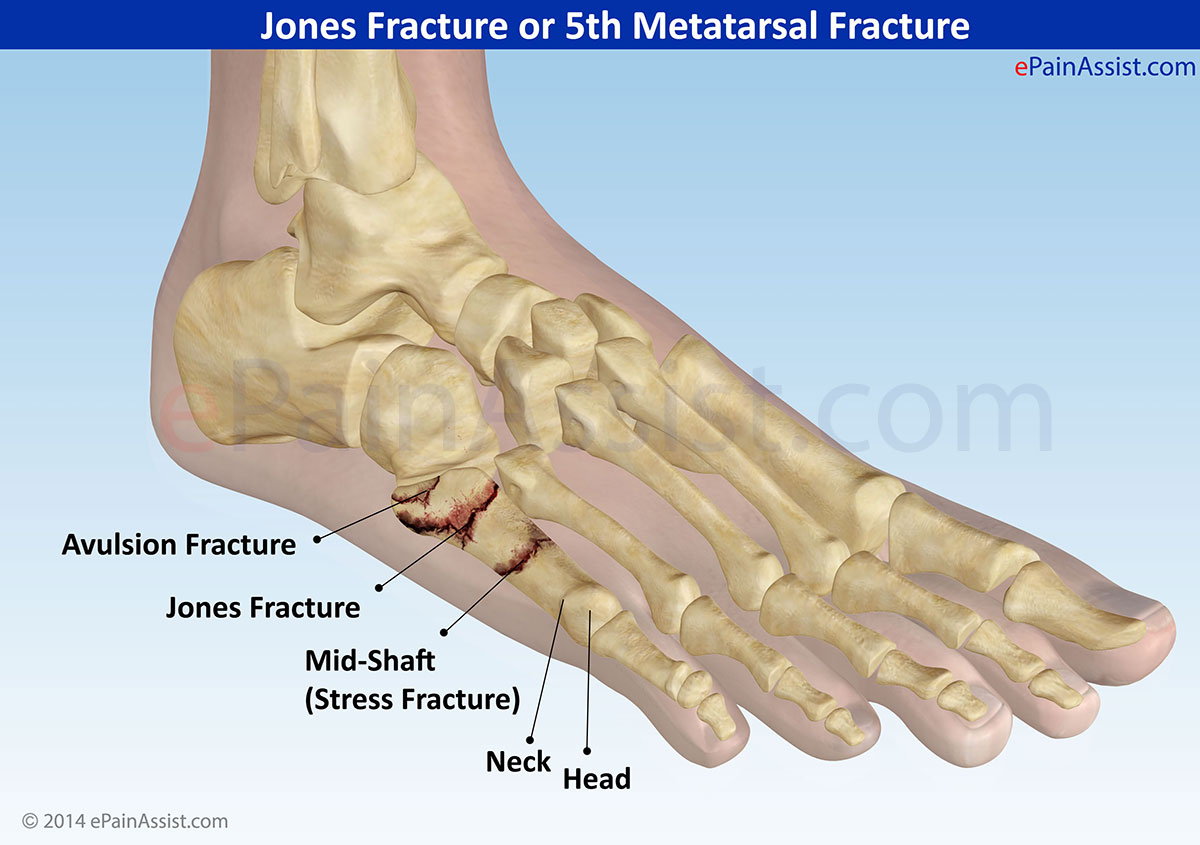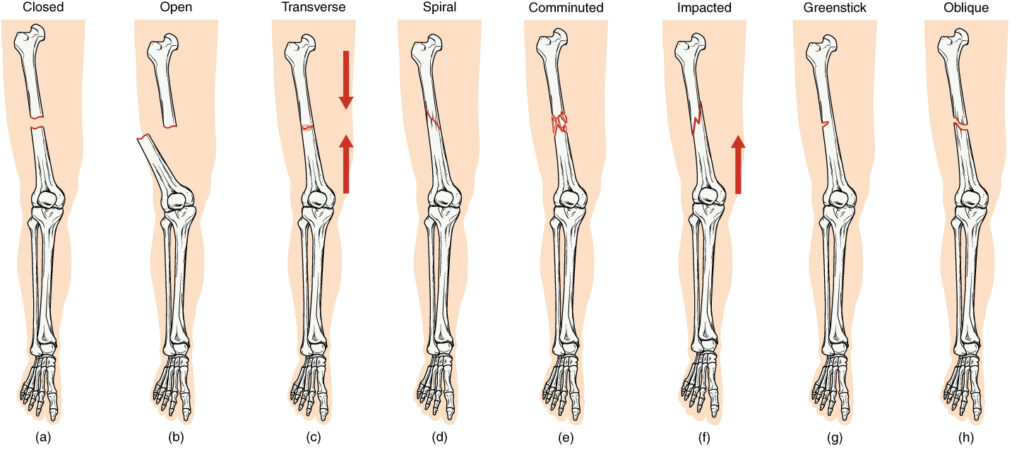A broken bone, also referred to as a fracture, is a common injury that can happen to anyone at any age. Fractures occur when the physical integrity of a bone is compromised due to excessive force or stress. While fractures are often associated with accidents, they can also result from underlying medical conditions that weaken the skeletal system. Understanding the types of fractures, their causes, and the healing process is essential for proper care and recovery.

What Are the Different Types of Broken Bones?
Fractures can vary significantly in severity and appearance. Below are some of the most common types of broken bones:
Simple Fracture
A simple fracture occurs when the bone breaks but does not pierce through the skin. This type of fracture is generally less complicated to treat compared to others, as there is no open wound to manage.
Compound Fracture
In a compound fracture, the broken bone protrudes through the skin, creating an open wound. This type of fracture is more serious because it increases the risk of infection and requires immediate medical attention.
Stress Fracture
Stress fractures are small cracks or severe bruising within a bone, typically caused by repetitive force or overuse. Athletes and individuals who engage in high-impact activities are particularly prone to this type of injury.
Comminuted Fracture
A comminuted fracture occurs when the bone shatters into multiple fragments. This type of fracture is often the result of high-impact trauma, such as a car accident or a fall from a significant height.
Greenstick Fracture
A greenstick fracture is an incomplete break where the bone bends and cracks, similar to how a young tree branch might break. This type of fracture is most commonly seen in children, whose bones are still developing and are more flexible.
Transverse Fracture
In a transverse fracture, the break occurs in a straight horizontal line across the bone. This type of fracture is often caused by direct, forceful impact to the bone.
Oblique Fracture
An oblique fracture occurs when the break has an angled pattern. This type of fracture is usually the result of a sharp, sudden twist or bend to the bone.
What Causes Broken Bones?
There are numerous factors that can lead to a broken bone. Some of the most common causes include:
Trauma
Traumatic events such as falls, car accidents, or sports injuries are among the leading causes of broken bones. These incidents often involve significant force that exceeds the bone’s ability to withstand pressure.
Osteoporosis
Osteoporosis is a condition characterized by weakened bones, making them more susceptible to fractures. Individuals with osteoporosis may experience fractures even from minor falls or everyday activities.
Overuse
Repetitive movements or overuse of certain parts of the body can lead to stress fractures. Runners, dancers, and athletes who engage in high-impact activities are particularly at risk.
Medical Conditions
Certain medical conditions, such as bone cancer or infections, can weaken the bones and increase the likelihood of fractures. Additionally, nutritional deficiencies, such as a lack of calcium or vitamin D, can contribute to weaker bones.
The Healing Process of a Broken Bone
The healing process of a broken bone involves several stages, each critical to ensuring proper recovery. Understanding these stages can help individuals better manage their recovery journey.
Inflammatory Stage
Immediately after a bone breaks, the body initiates the inflammatory stage. Blood vessels around the fracture site rupture, causing bleeding and swelling. This initial response helps stabilize the area and prepares it for the next phase of healing.
Repair Stage
During the repair stage, the body begins to form new tissue to bridge the gap between the broken bone ends. Specialized cells called osteoblasts produce collagen and other materials to create a soft callus. Over time, this soft callus hardens into a bony callus, stabilizing the fracture further.
Remodeling Stage
The remodeling stage is the final phase of bone healing. During this stage, the bony callus is reshaped and strengthened to restore the bone’s original structure and function. This process can take several weeks to months, depending on the severity of the fracture and the individual’s overall health.
How to Care for a Broken Bone
Proper care is essential for ensuring a smooth and successful recovery from a broken bone. Below are some key steps to follow:
Seek Immediate Medical Attention
If you suspect a broken bone, it is crucial to seek medical attention immediately. A healthcare professional will assess the injury, confirm the diagnosis, and determine the appropriate treatment plan.
Immobilization
Immobilization is a critical component of fracture care. Depending on the type and location of the fracture, a cast, splint, or brace may be used to keep the bone in place while it heals. In some cases, surgery may be required to realign the bone and secure it with screws, plates, or rods.
Pain Management
Pain management is an important aspect of fracture care. Over-the-counter pain relievers, such as ibuprofen or acetaminophen, can help alleviate discomfort. In more severe cases, prescription medications may be necessary.
Follow-Up Appointments
Regular follow-up appointments with your healthcare provider are essential to monitor the healing process. X-rays or other imaging tests may be performed to ensure the bone is healing correctly.
Physical Therapy
Once the bone has healed sufficiently, physical therapy may be recommended to restore strength, flexibility, and range of motion. A physical therapist can design a personalized rehabilitation program to meet your specific needs.
Nutrition and Lifestyle
Good nutrition plays a vital role in bone healing. Consuming a diet rich in calcium, vitamin D, and protein can support the body’s natural healing processes. Avoiding smoking and excessive alcohol consumption is also important, as these habits can slow down recovery.
Preventing Broken Bones
While it may not always be possible to prevent broken bones, there are steps you can take to reduce your risk:
- Maintain Strong Bones: Ensure adequate intake of calcium and vitamin D through diet or supplements. Regular weight-bearing exercises, such as walking or lifting weights, can also help strengthen bones.
- Practice Safety: Take precautions to prevent falls, such as using handrails on stairs and keeping walkways clear of obstacles. Wearing protective gear during sports or high-risk activities is also advisable.
- Address Underlying Conditions: If you have a medical condition that affects bone health, work closely with your healthcare provider to manage it effectively.
When to Seek Emergency Care
Some fractures require immediate medical attention. You should seek emergency care if you experience any of the following:
- Severe pain that does not improve with rest or over-the-counter pain relievers
- Visible deformity or misalignment of the affected limb
- Open wounds or exposed bone at the fracture site
- Numbness, tingling, or loss of sensation in the affected area
- Difficulty moving the injured limb or bearing weight on it
Understanding the Role of Imaging in Diagnosing Fractures
Imaging techniques play a crucial role in diagnosing and assessing fractures. The most commonly used methods include:
X-Rays
X-rays are the primary tool used to diagnose fractures. They provide detailed images of the bone, allowing healthcare providers to identify the location and severity of the break.
Magnetic Resonance Imaging
Magnetic resonance imaging, or MRI, is often used to evaluate soft tissues surrounding the fracture. This imaging technique can help detect ligament or tendon damage that may accompany a broken bone.
Computed Tomography Scans
Computed tomography scans, or CT scans, provide cross-sectional images of the bone. These scans are particularly useful for complex fractures, as they offer a more detailed view than traditional X-rays.
Special Considerations for Children and Older Adults
Children and older adults face unique challenges when it comes to broken bones. Understanding these differences can help ensure appropriate care.
Children
Children’s bones are still growing and are more flexible than adult bones. As a result, they are more likely to experience greenstick fractures or growth plate injuries. Proper diagnosis and treatment are essential to avoid long-term complications.
Older Adults
Older adults are at higher risk of fractures due to age-related bone loss and conditions like osteoporosis. Falls are a leading cause of fractures in this population, making fall prevention strategies particularly important.




